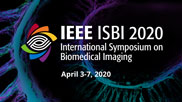Collection:

The early detection of dental plaque could prevent periodontal diseases and dental caries, however, it is difficult to recognize it without the use of medical dyeing reagent due to the low contrast between dental plaque and teeth. To combat this problem, this paper introduces a novel low-shot learning method of the intelligent dental plaque segmentation directly using oral endoscope images. The key contribution is to conduct low-shot learning at the super-pixel level and integrate the super-pixels' global and local features towards better segmentation results. Our rationale is that, super-pixel based CNN feature focuses on the statistical distribution of plaques' color, heat kernel signature (HKS) aims to capture the local-to-global structure relationship in the nearby regions centering around plaque area, and circle-LBP feature depicts the local texture pattern on the plaque area. The experimental results confirm that our method outperforms the state-of-the-art methods based on small scale training datasets, and the user study demonstrates our method is more accurate than conventional manual results delineated by experienced dentists.
- IEEE MemberUS $11.00
- Society MemberUS $0.00
- IEEE Student MemberUS $11.00
- Non-IEEE MemberUS $15.00
Videos in this product
Low-Shot Learning of Automatic Dental Plaque Segmentation Based on Local-To-Global Feature Fusion
The early detection of dental plaque could prevent periodontal diseases and dental caries, however, it is difficult to recognize it without the use of medical dyeing reagent due to the low contrast between dental plaque and teeth. To combat this problem, this paper introduces a novel low-shot learning method of the intelligent dental plaque segmentation directly using oral endoscope images. The key contribution is to conduct low-shot learning at the super-pixel level and integrate the super-pixels' global and local features towards better segmentation results. Our rationale is that, super-pixel based CNN feature focuses on the statistical distribution of plaques' color, heat kernel signature (HKS) aims to capture the local-to-global structure relationship in the nearby regions centering around plaque area, and circle-LBP feature depicts the local texture pattern on the plaque area. The experimental results confirm that our method outperforms the state-of-the-art methods based on small scale training datasets, and the user study demonstrates our method is more accurate than conventional manual results delineated by experienced dentists.
 Cart
Cart Create Account
Create Account Sign In
Sign In
